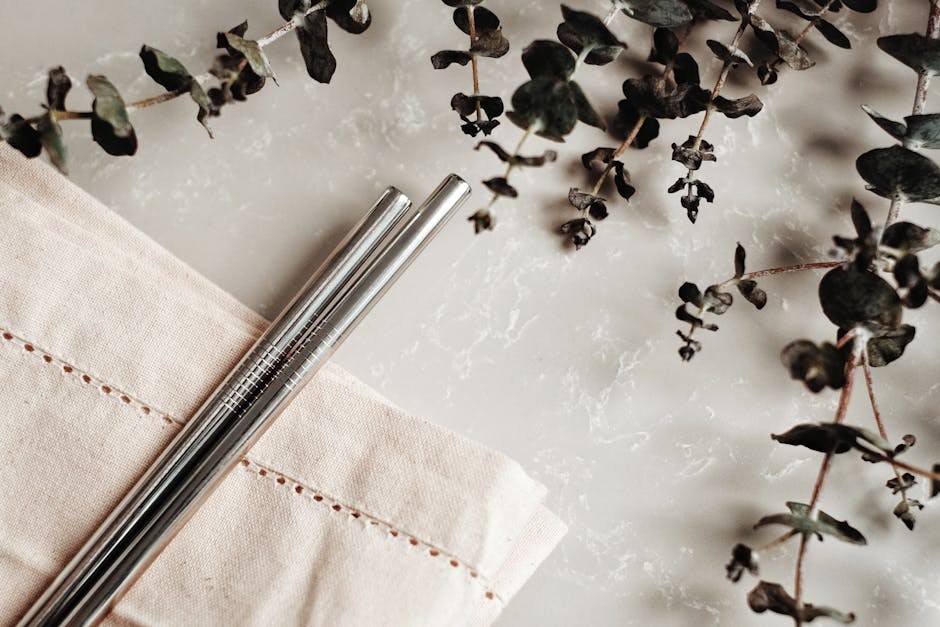Curiosity about sexual interests often meets silence – especially when the topic lives outside everyday conversation. Among these lesser-discussed themes is the diaper fetish, a subject that can trigger judgment before understanding. This guide offers clear, non-sensational context so adults can recognize what the diaper fetish is, how it may develop, and how partners can navigate it with empathy, consent, and healthy boundaries.
First things first: a broad view of desire
Human arousal is not a single track. For many people, attraction revolves around bodies and intimacy; for others, objects, materials, rituals, roles, or sensations become central to excitement. A diaper fetish fits inside this wider landscape – not as a universal experience, but as one variation among many ways adults explore pleasure. When discussed openly and practiced with consent, the diaper fetish can be one thread in a consensual sex life rather than its entirety.
What counts as a fetish?
A fetish generally refers to an enduring pattern of sexual interest in an object, sensation, role, or scenario that isn’t inherently sexual on its own. It is not limited to intercourse or even to typical markers of sex. The focus might be a texture, a garment, a sound, a ritual, or an experience that shapes arousal and fantasy. Because desire is personal, two individuals can share the same label yet experience it in distinct ways – one person’s diaper fetish may center on comfort and regression, while another’s involves excitement from the unique feel and sound of a diaper during everyday activities.

Crucially, a fetish does not automatically mean deviance or harm. The ethical linchpins remain the same as with any intimacy – consent, safety, communication, and respect for boundaries. When those conditions are present, a diaper fetish can be integrated into relationships without causing distress. When they are absent, conflicts and hurt are more likely to arise.
How a fetish may take shape
Explanations for why any given fetish emerges vary. Some people recall formative experiences that linked a neutral object or routine with heightened emotion or bodily sensations. Over time, those links can become woven into arousal. Others can’t point to any single moment – a diaper fetish might simply have felt natural once discovered. There is no universal timeline. What does matter is how a person chooses to relate to the interest now: with self-knowledge, self-care, and attention to the consent of others.
Because no two stories are identical, assumptions can do harm. One person may associate a diaper fetish with relaxation after long periods of stress, another with playful role-play, another with the sensory feel of materials against skin. Each account is individual. The common thread is that the diaper fetish is an adult preference – it belongs to consenting adults and must never involve real minors, fantasies of minors, or non-consensual dynamics.

“Normal” is less useful than “healthy”
People often ask whether a particular interest is normal. A better question is whether it is healthy for those involved. Does the diaper fetish fit within one’s life without crowding out other sources of fulfillment? Can it be discussed openly with a partner without shame or coercion? Healthy expression is measured less by popularity and more by impact – does it respect consent, uphold safety, and support well-being?
Like many interests, intensity matters. If someone cannot feel aroused at all without re-creating a narrow scenario, they may experience frustration in relationships. Conversely, flexibility – being able to enjoy intimacy with or without the fetish – can make negotiation easier. That does not invalidate the diaper fetish; it simply highlights how range and adaptability can support connection.
Defining the diaper fetish in adult terms
At its core, the diaper fetish involves an adult’s interest in wearing diapers, using diapers, or engaging in related rituals or role-play. This can be sexual, sensual, emotional, or comforting – sometimes all of the above. Broadly speaking, people who identify with a diaper fetish often land in overlapping communities with varied emphasis:

Diaper-focused enjoyment as adults. Some individuals, often referred to informally as diaper lovers, describe pleasure in the feel, fit, or practicality of diapers. Their diaper fetish may not include role-playing younger ages; it may center entirely on the texture, security, or convenience of the garment for adult bodies.
Role-play among consenting adults. Others incorporate age regression themes – not involving real children, but adult-to-adult role-play where one partner temporarily adopts a “little” persona and the other a caring role. Here, the diaper fetish intersects with nurturing scripts, caretaking rituals, and agreed-upon boundaries established by adults.
Both patterns exist on a spectrum. A person might move between them over time or stay primarily in one area. The unifying principle is responsible adult participation – consent-driven, negotiated, and free from any involvement of minors.
Why diapers, specifically?
Diapers mix several elements that can be potent for arousal and comfort: tactile sensations from soft padding; audible cues like crinkling; a sense of containment or security; rule-based rituals such as changing, cleaning up, or dressing; and the psychological relief of temporarily letting go of adult expectations. For some, the diaper fetish highlights the thrill of doing something taboo while remaining discreet. For others, it underscores coziness – a material-based sanctuary after a demanding day.
Common expressions of a diaper fetish
Because the diaper fetish is varied, the expressions below are not checklists but representative possibilities. Adults who share this interest may practice one, several, or none of these options, and their preferences can evolve.
Discreet wear during everyday life. Some find pleasure in wearing a diaper under regular clothing while running errands or relaxing at home. The appeal can be the sensory feel or the quiet thrill of a private ritual. The diaper fetish, in this sense, functions as a personal comfort object that remains invisible to others.
Appreciation of sounds and textures. The crinkle of movement or the cushion of padding can be pleasing – not only sexually, but also emotionally. The diaper fetish can emphasize these sensory cues much like other fetishes emphasize leather, silk, or latex.
Intentional wetting within agreed boundaries. For some, using a diaper is part of the experience. Adults who practice this typically set hygiene and cleanliness rules. The diaper fetish may incorporate planned changes, waterproof covers, or shower routines to keep partners and spaces comfortable.
Changing as a caretaking ritual. In role-play dynamics, a partner may take on a caregiver role. The diaper fetish here is less about the object and more about structured nurturing – soothing talk, gentle guidance, or playful rules, all negotiated beforehand. Aftercare – cuddling, warmth, reassurance – often bookends the scene.
Visual enjoyment. Some prefer looking at adult fashion or erotica that includes diapers. When consumed, it must depict consenting adults – never minors – and align with platform rules and local laws. Within those boundaries, the diaper fetish can be a visual motif rather than a lived activity.
Comfort-first wearing. Not every expression is erotic. People who manage bladder concerns, stress, or sensory needs may discover that diapers simply feel more secure. In those cases, the diaper fetish may blur into comfort – a sense of ease that may or may not be sexual.
About role-play – consent drives the scene
Role-play can be imaginative and tender when the participants set firm ground rules. Adults who explore a diaper fetish with regression themes typically outline what is in-bounds and out-of-bounds before starting. Safewords or signal systems help either party pause or stop instantly. The emphasis is on emotional safety – the scene ends the moment consent changes.
Because scenes can involve power differences – caregiver and care-receiver – negotiation is essential. What language feels affirming? Which activities are welcome, and which are hard limits? How long might the scene last? What clean-up plan keeps both parties comfortable? The more details are agreed upon beforehand, the more relaxed the experience can be.
Respect, privacy, and discretion
Adult interests remain private unless someone chooses to share them. If a friend or partner discloses a diaper fetish, the kindest first response is simple acknowledgment – “Thanks for trusting me with this.” Curiosity is natural, but prying or gossiping is not. Discretion protects dignity. Even when you do not share the same interest, empathy is possible: you do not have to participate to be respectful.
When the diaper fetish becomes challenging
Any interest can overwhelm life if it becomes the only route to pleasure or routinely conflicts with responsibilities and relationships. Signs of strain might include difficulty enjoying intimacy without a precise setup, arguments about secrecy or boundaries, or avoidance of conversation due to shame. None of those mean a person is broken – they are cues to slow down, reassess, and communicate.
Partners can collaborate on a plan: frequency, timing, and contexts that feel acceptable to both; hygiene standards; storage and laundry routines; and privacy guidelines. The diaper fetish does not have to be a daily feature. Some couples establish dedicated moments for exploration and keep other times free of fetish elements.
Talking with a partner about a diaper fetish
Bringing up a vulnerable topic can be daunting. Many people wait because they fear ridicule or rejection. A gentler approach is to introduce the diaper fetish outside the bedroom – over a calm conversation – and to focus on feelings rather than demands. Instead of saying, “I need this or else,” try, “This is part of my erotic landscape, and I want to share it with you so we can decide together what might work.”
After disclosure, expect a range of reactions. Some partners will be curious and willing to experiment; others may need time; a few may realize the activity is not for them. All responses are valid. Consent remains the anchor – no one is obligated to participate, and no one is obligated to give up a core part of themselves. If values clash, parting kindly can be healthier than pressuring either person to conform.
Practicalities: hygiene, safety, and logistics
Because diapers involve bodily contact and, at times, bodily fluids, planning matters. Adults who incorporate a diaper fetish often agree on steps that keep experiences comfortable and considerate for everyone involved. While every household will adapt details to its own standards, common themes include:
Preparation. Having supplies ready – clean diapers, wipes, disposal bags, and a lined bin – can lower stress. Setting a designated space for changes helps keep messes contained and possessions tidy.
Skin care. Gentle cleansing and letting skin dry fully can reduce irritation. Fragrance-free products and breathable time without a diaper can be part of aftercare when the scene ends.
Laundry and disposal. Agreeing on who handles clean-up and how to dispose of used items prevents misunderstandings. Privacy can be maintained with opaque bags or discreet bins.
Boundaries around public spaces. Even when a person enjoys wearing diapers during errands, they may set personal rules about use, changes, or scent control to be considerate of others. The diaper fetish should remain an adult matter practiced with respect for community norms.
Community, clubs, and connection
Some adults seek community with others who share similar interests – not to sexualize every gathering, but to be understood without judgment. Meetups or online spaces may organize low-pressure activities where the focus is companionship rather than sexual contact. For people who feel isolated, these spaces can reduce shame and normalize conversation. As always, privacy, consent, and safety guidelines apply.
Understanding motivations without pathologizing
People may wonder whether a diaper fetish signals something “wrong.” A more compassionate lens recognizes that desire and comfort can stem from many places – stress relief, sensory preferences, or a history of feeling soothed by structure and care. Recognizing those roots does not require inventing explanations or assigning blame. What matters is using self-awareness to build practices that are consensual, healthy, and sustainable.
When distress does arise – for instance, if shame spirals after every scene, or arguments recur – outside support can help. Some individuals benefit from talking with a therapist who is familiar with kink-aware, nonjudgmental approaches. The goal isn’t to erase the diaper fetish but to integrate it so it neither dominates life nor becomes a source of secrecy and fear.
What to do if the diaper fetish is yours
Start with self-acceptance. Naming the diaper fetish to yourself can loosen the grip of shame. Next, make a values list – consent, kindness, discretion, honesty – and let those values guide how, when, and with whom you share. If you are partnered, choose a calm time to talk, outline what specifically appeals to you, and ask your partner how they feel. Offer options rather than ultimatums: perhaps wearing without use, focusing on the sounds and textures, or scheduling occasional scenes with clear limits. You can adjust over time as trust grows.
If you are single, you can still treat the diaper fetish with care. Build routines that protect your privacy and your space; practice good hygiene; and stay mindful of balance so that other parts of life – friendships, work, hobbies – continue to thrive.
What to do if someone confides in you
If a friend or partner shares that they have a diaper fetish, the most supportive stance is open curiosity paired with firm boundaries. Thank them for the trust; ask what the interest means to them; and be honest about your comfort level. “No” is a complete sentence if participation does not fit your values. If you are willing to explore, start small and debrief afterward. If you are not, you can still be kind while declining.
Ethics that keep everyone safe
Several ethical guardrails can protect people and relationships when exploring a diaper fetish:
Consent, every time. Agreement before, permission during, and check-ins after are foundational. Consent can be revised at any point, without penalty.
Age-appropriate boundaries. The diaper fetish belongs solely to consenting adults. It must never involve minors in any capacity, including depiction, fantasy, or role assignment.
Privacy and respect. Keep disclosures confidential. Do not involve bystanders who have not consented to participate or witness private activities.
Care for shared spaces. Plan clean-up, storage, and scent control. Courtesy preserves trust.
Honest communication. Share feelings in plain language – excitement, nervousness, confusion – so that both people can respond kindly and make informed choices.
If the conversation gets stuck
Sometimes partners cannot find overlap. One person may feel that the diaper fetish expresses a core part of their erotic identity, while the other feels fundamentally incompatible with it. In those cases, mutual respect still applies. You can acknowledge the reality of the difference without shaming the person or the interest. Choosing separate paths can be an act of care when it prevents resentment and preserves dignity.
Putting it together – an adult conversation about adult interests
At the end of the day, the diaper fetish is one of many ways adults map comfort, play, and pleasure onto everyday objects and roles. It can be sensual, sexual, nurturing, or simply soothing. It can be occasional or central. It can be shared or kept private. What keeps it healthy is the same set of principles that anchor any intimate life – consent, communication, care, and respect for limits.
If the words feel awkward at first, that is normal – language grows with practice. Gentle honesty tends to open doors that fear keeps locked. Whether you are the person with the diaper fetish or the person listening, you are allowed to ask questions, negotiate, and change your mind. You are also allowed to draw firm lines. Adults thrive when choices are honored, when privacy is protected, and when bodies and boundaries are treated with care.
No single script will fit everyone. Your version might prioritize sensation; someone else’s might focus on caretaking; another person’s might be mostly about comfort. What matters is that you and those you love can talk about it – openly, safely, and without contempt – so that intimacy remains a source of connection rather than conflict. With courage and kindness, even a sensitive topic like a diaper fetish can be integrated into a life that feels authentic and whole.